
- SAP Community
- Products and Technology
- Technology
- Technology Blogs by Members
- Upgrading the SAP Cloud Connector for Windows OS
Technology Blogs by Members
Explore a vibrant mix of technical expertise, industry insights, and tech buzz in member blogs covering SAP products, technology, and events. Get in the mix!
Turn on suggestions
Auto-suggest helps you quickly narrow down your search results by suggesting possible matches as you type.
Showing results for
pjcools
Active Contributor
Options
- Subscribe to RSS Feed
- Mark as New
- Mark as Read
- Bookmark
- Subscribe
- Printer Friendly Page
- Report Inappropriate Content
07-22-2017
8:14 PM
Some months ago I performed an upgrade of the SAP Cloud Connector for the Linux OS. This worked very well and was a simple process overall. Check out my previous blog here. I am now attempting an upgrade of the SAP Cloud Connector on a Windows OS environment. I read the SAP help information associated with upgrades and it explained that an Uninstall then a new Install was required but that configuration settings would be preserved. Check standard help information here. I wondered how this would work given there are usually security certificates loaded into the SAP Cloud Connector as well as general configuration options – not to mention connectivity to the SAP Cloud Platform.
NOTE: This type of upgrade is only supported for the Installer variants (msi install files). There is additional information in the sap help around Portable Variant upgrades so please refer to this for assistance.
OK – time to upgrade.
Before carrying out the steps, make sure you have downloaded the software from the SAP Development Tools (https://tools.hana.ondemand.com) website selecting the [Cloud] menu item followed by the Windows install file as highlighted below.

Make sure to download the Windows msi file as highlighted above. This is the Installer variant. When you downloaded the file you will need to Agree to the End User License agreement. Click button I Have Read And Agree to start the download.

Save the install files to a known place as you will need this in later instructions.
The first thing to know is that there are different procedures required based on the OS installed on the boxes that the SAP Cloud Connector applications live on.In my upgrade blog on the Linux OS simple commands were required to upgrade the application. For windows, a complete de-installation and re-installation (of the new version) is required.
Additionally, the new version needs to be installed in the same directory. The key to retaining settings is to make sure the Configuration settings/files are retained. This will be explained below. Let’s first set the scene by looking at the current version that is in play with respect to the relevant OS versions.
Let's firstly login to the current SAP Cloud Connector version and check the version. The current version can be found by navigating to the top right corner and clicking on the expand option at the side of the Userid. There is a menu option called [About]. This of course assumes you have already logged in as Administrator!

If you click on this another pop-up window will be displayed showing the Version information. You can see below the OS is Windows 10. Note the working directory as well.

In this case the current version is 2.9.0.2. You will also notice that on the initial login screen the application is described as SAP HANA Cloud Connector - this is before the name change.

With the new version of 2.10.0.1 out I will now attempt an upgrade, but first let’s check a few settings prior to the upgrade and make sure they are the same after the upgrade.
Let’s first check connectivity to the SAP Cloud Platform account. This is the first step, even before connecting to backend SAP systems, that is required.


You can see that we have successful connection to the SAP Cloud Platform account and the relevant secure tunnel is in place.
Next, let’s check backend connections exist and resources are available.

Lastly, let’s check some of the configuration settings as well as certificate information that exists in the current version - these need to be retained after the upgrade.We will check them now and after the upgrade.
System certificate that is installed exists.
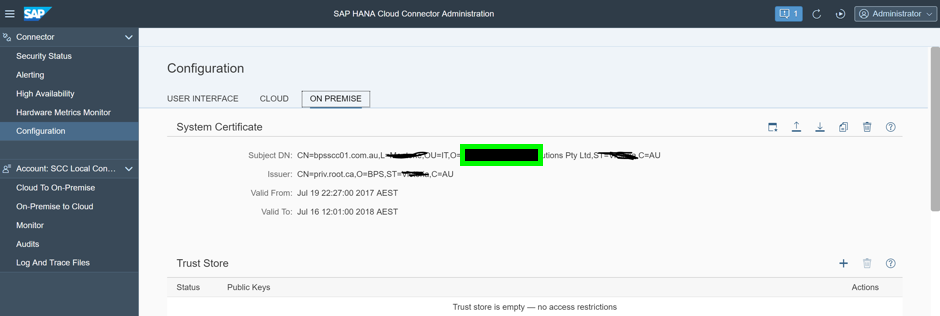
CA certificate also exists.
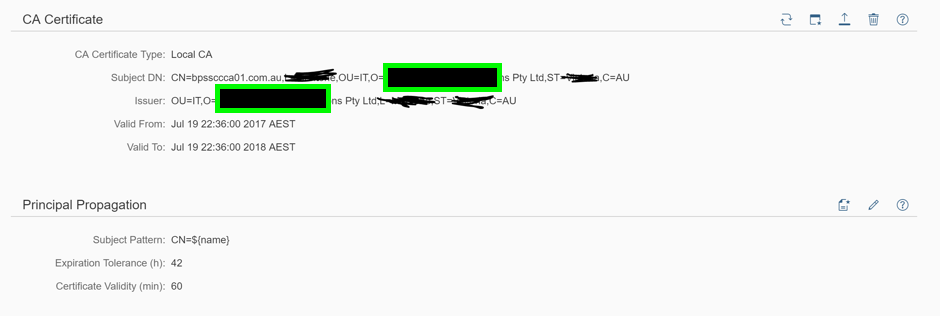
ALL of these settings should be retained after the upgrade.
You can create a backup of configuration files to retain this information between upgrades. SAP recommends packaging the following 3 folders into an archive:
By default, a backup folder will be kept during the uninstallation process however this is an insurance policy.
The above folders can be found by navigating to the C:\SAP\scc20\ directory. One of the folders is detailed below as an example. You will see a number of files including an scc_config.ini file. You will see a jks file as well that will keep information about the certificates. You will also see a directory linked to the Hana trial account. In a productive environment this would actually include the production SCP account.

OK, now we have checked all of that let us now attempt to carry out an upgrade. Godspeed!
NOTE: If you have a Master AND Shadow instance as part of a HIGH AVAILABILITY environment you need to upgrade the shadow instance first. Once the upgrade on the shadow instance is complete you then use the [Switch Roles] function that will swap the previous Master (the SAP Cloud Connector instance that has NOT been upgraded) to the Slave. The Slave instance (which has been upgraded) will then become the master while the NEW slave is being upgraded.
If you have a single instance there will be downtime in the environment during the upgrade process, so please build this into your project timeline.
For more information on setting up High Availability check simen.huuse3 blog here.
NOTE: Before carrying out an Uninstall please just make sure you have logged out of the SAP Cloud Connector otherwise files may be locked and the process may not work successfully.
The first step in the process is to Uninstall the previous version:

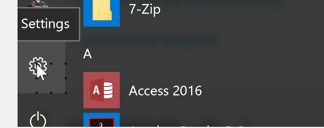
The following Windows Settings screen will be displayed.

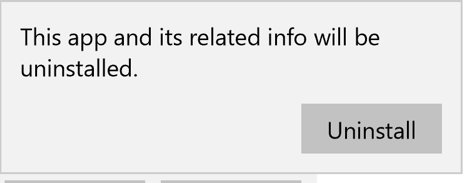

If we also try to run this now the SAP Cloud Connector should not be available. The desktop shortcuts should also not exist.

This is exactly as we expect. So, at this point we have completed the uninstallation process of the previous SAP Cloud Connector version.
Once the uninstall is complete locate the new version’s installer file and execute it. The latest version is 2.10.0.1 and this is the installation file.


NOTE: Make sure the same directory is chosen so that the configuration files can remain.
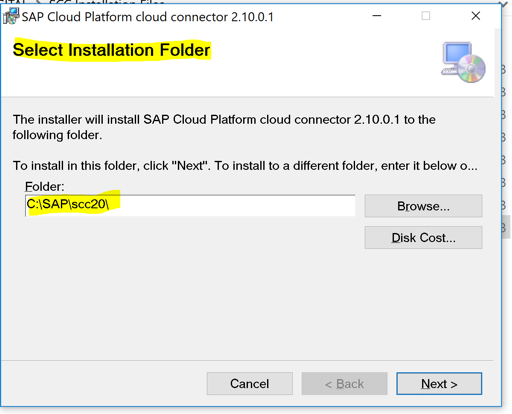

You will then receive the successful installation pop-up window.

Great - the installation process went smoothly.
We can check the Windows services to confirm this.
We can see below that this service is running.

Hooray!!! Our upgrade was successful. Let’s now see if all of our previous set up is still in place – is it still there???
Login to the Cloud Connector using your Administrator password. This will be the same as it was before!

We can already see that the name has changed. With the recent changing of the SAP HANA Cloud Platform to SAP Cloud Platform this has also meant a change to the Cloud Connector naming convention to SAP Cloud Platform Cloud Connector.
Let us check the version again. We can see below that the version is now 2.10.0.1 – the new version! Awesome!

Connectivity to the SAP Cloud Platform accounts looks good as well. We can see some additional display elements and options as well (e.g. Subaccount Certificate button). Nice!

We can see that the Tunnel is connected and a Connector ID has been populated. Looking good.

The connection to backend systems looks intact as well.

Let’s now check the certificates. System certificate looks good. No changes. This is great.

CA certificate for Principal Propagation is also in place.
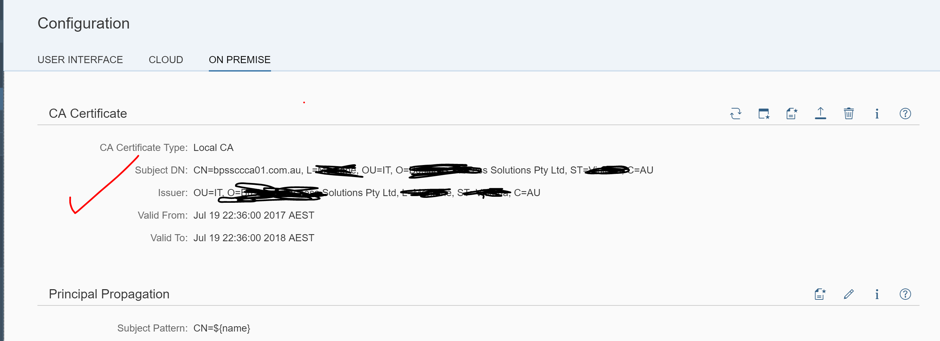
OK, so you can see that this task was not too painful and now I can utilize some of the new features in the 2.10.0.1 version. Awesome!!!
If I look at the log files as well, they are all intact.All of the previous history still exists. We did see the additional Logs directory kept after the install so this makes sense.

Looking at the directory structures also you can see the previous backup still exists.

All in all, this was not too cumbersome a process and good to see everything is still the same after performing an upgrade.
Well done SAP. Good job!
NOTE: This type of upgrade is only supported for the Installer variants (msi install files). There is additional information in the sap help around Portable Variant upgrades so please refer to this for assistance.
OK – time to upgrade.
Before carrying out the steps, make sure you have downloaded the software from the SAP Development Tools (https://tools.hana.ondemand.com) website selecting the [Cloud] menu item followed by the Windows install file as highlighted below.

Make sure to download the Windows msi file as highlighted above. This is the Installer variant. When you downloaded the file you will need to Agree to the End User License agreement. Click button I Have Read And Agree to start the download.

Save the install files to a known place as you will need this in later instructions.
The first thing to know is that there are different procedures required based on the OS installed on the boxes that the SAP Cloud Connector applications live on.In my upgrade blog on the Linux OS simple commands were required to upgrade the application. For windows, a complete de-installation and re-installation (of the new version) is required.
Additionally, the new version needs to be installed in the same directory. The key to retaining settings is to make sure the Configuration settings/files are retained. This will be explained below. Let’s first set the scene by looking at the current version that is in play with respect to the relevant OS versions.
Upgrade Pre-Checks (Windows OS)
Let's firstly login to the current SAP Cloud Connector version and check the version. The current version can be found by navigating to the top right corner and clicking on the expand option at the side of the Userid. There is a menu option called [About]. This of course assumes you have already logged in as Administrator!

If you click on this another pop-up window will be displayed showing the Version information. You can see below the OS is Windows 10. Note the working directory as well.

In this case the current version is 2.9.0.2. You will also notice that on the initial login screen the application is described as SAP HANA Cloud Connector - this is before the name change.

With the new version of 2.10.0.1 out I will now attempt an upgrade, but first let’s check a few settings prior to the upgrade and make sure they are the same after the upgrade.
Let’s first check connectivity to the SAP Cloud Platform account. This is the first step, even before connecting to backend SAP systems, that is required.


You can see that we have successful connection to the SAP Cloud Platform account and the relevant secure tunnel is in place.
Next, let’s check backend connections exist and resources are available.

Lastly, let’s check some of the configuration settings as well as certificate information that exists in the current version - these need to be retained after the upgrade.We will check them now and after the upgrade.
System certificate that is installed exists.

CA certificate also exists.

ALL of these settings should be retained after the upgrade.
Backup Steps
You can create a backup of configuration files to retain this information between upgrades. SAP recommends packaging the following 3 folders into an archive:
- config
- config_master
- scc_config
By default, a backup folder will be kept during the uninstallation process however this is an insurance policy.
The above folders can be found by navigating to the C:\SAP\scc20\ directory. One of the folders is detailed below as an example. You will see a number of files including an scc_config.ini file. You will see a jks file as well that will keep information about the certificates. You will also see a directory linked to the Hana trial account. In a productive environment this would actually include the production SCP account.

OK, now we have checked all of that let us now attempt to carry out an upgrade. Godspeed!
NOTE: If you have a Master AND Shadow instance as part of a HIGH AVAILABILITY environment you need to upgrade the shadow instance first. Once the upgrade on the shadow instance is complete you then use the [Switch Roles] function that will swap the previous Master (the SAP Cloud Connector instance that has NOT been upgraded) to the Slave. The Slave instance (which has been upgraded) will then become the master while the NEW slave is being upgraded.
If you have a single instance there will be downtime in the environment during the upgrade process, so please build this into your project timeline.
For more information on setting up High Availability check simen.huuse3 blog here.
Uninstallation Steps
NOTE: Before carrying out an Uninstall please just make sure you have logged out of the SAP Cloud Connector otherwise files may be locked and the process may not work successfully.
The first step in the process is to Uninstall the previous version:
- Navigate to Windows icon on the footer bar then choose Windows Settings. In a Windows 10 environment you select the Settings cog as highlighted below.

The following Windows Settings screen will be displayed.

- Select the [Apps] option that will allow us to Uninstall the SAP Cloud Connector. The following screen will be displayed.

- Using the search option enter SAP HANA to find the Cloud Connector application. This should be displayed when it is found. You will see it is version 2.9.0.2.

- Click on the [Uninstall] icon - twice.

- During the uninstall process you will be asked whether you want to retain the SCC configuration files. This will save the configuration files in a newly created folder called config_backup.
Make sure you select YES here to retain the previous settings.

- Click on [Yes] to retain the SCC configuration files.

If we also try to run this now the SAP Cloud Connector should not be available. The desktop shortcuts should also not exist.

This is exactly as we expect. So, at this point we have completed the uninstallation process of the previous SAP Cloud Connector version.
Re-Installation Steps
Once the uninstall is complete locate the new version’s installer file and execute it. The latest version is 2.10.0.1 and this is the installation file.

- Double click the file to start the Install process. This will guide you through the installation process so please follow the steps.
 \
\

- Click on the [Next] icon to progress through to the next steps.
NOTE: Make sure the same directory is chosen so that the configuration files can remain.

- Select [Next] to progress to the Port setting screen.Keep the same port setting of 8443.

- Click [Next] to continue. You will then need to choose the JDK location. This should be the same location that was selected during the previously install.
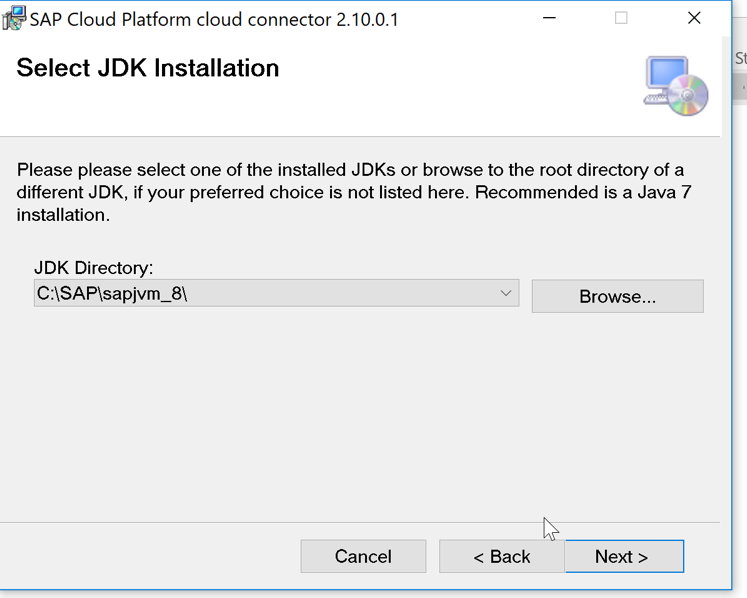
- Click the [Browse] button to locate the JVM as you can see below.
- Click the [Next] button to continue. You will then see the successful installation message and whether you want to start the SAP Cloud Connector.

- Click the [Start SAP Cloud Platform cloud connector] checkbox and continue on with the [Next] button.You will then be asked to confirm the installation.
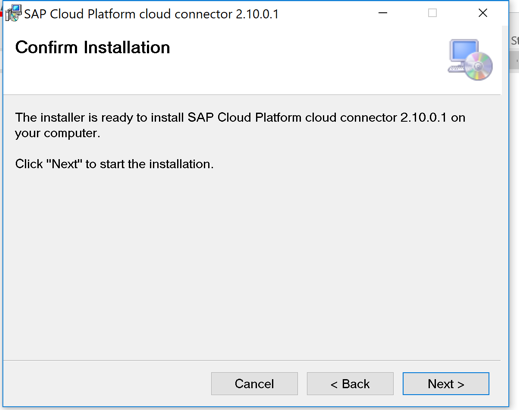
- Click on the [Next] button to confirm the installation of the new version.

You will then receive the successful installation pop-up window.

Great - the installation process went smoothly.
- Select the [Close] button to complete the installation. This would have started the SAP Cloud Connector application.
We can check the Windows services to confirm this.
We can see below that this service is running.

Hooray!!! Our upgrade was successful. Let’s now see if all of our previous set up is still in place – is it still there???
Final Checks
Login to the Cloud Connector using your Administrator password. This will be the same as it was before!

We can already see that the name has changed. With the recent changing of the SAP HANA Cloud Platform to SAP Cloud Platform this has also meant a change to the Cloud Connector naming convention to SAP Cloud Platform Cloud Connector.
- Login using the Administrator password. NOTE: The password is the same as it was previously.
Let us check the version again. We can see below that the version is now 2.10.0.1 – the new version! Awesome!

Connectivity to the SAP Cloud Platform accounts looks good as well. We can see some additional display elements and options as well (e.g. Subaccount Certificate button). Nice!

We can see that the Tunnel is connected and a Connector ID has been populated. Looking good.

The connection to backend systems looks intact as well.

Let’s now check the certificates. System certificate looks good. No changes. This is great.

CA certificate for Principal Propagation is also in place.

OK, so you can see that this task was not too painful and now I can utilize some of the new features in the 2.10.0.1 version. Awesome!!!
If I look at the log files as well, they are all intact.All of the previous history still exists. We did see the additional Logs directory kept after the install so this makes sense.

Looking at the directory structures also you can see the previous backup still exists.

All in all, this was not too cumbersome a process and good to see everything is still the same after performing an upgrade.
Well done SAP. Good job!
- SAP Managed Tags:
- SAP Connectivity service,
- SAP Business Technology Platform
12 Comments
You must be a registered user to add a comment. If you've already registered, sign in. Otherwise, register and sign in.
Labels in this area
-
"automatische backups"
1 -
"regelmäßige sicherung"
1 -
505 Technology Updates 53
1 -
ABAP
14 -
ABAP API
1 -
ABAP CDS Views
2 -
ABAP CDS Views - BW Extraction
1 -
ABAP CDS Views - CDC (Change Data Capture)
1 -
ABAP class
2 -
ABAP Cloud
2 -
ABAP Development
5 -
ABAP in Eclipse
1 -
ABAP Platform Trial
1 -
ABAP Programming
2 -
abap technical
1 -
absl
1 -
access data from SAP Datasphere directly from Snowflake
1 -
Access data from SAP datasphere to Qliksense
1 -
Accrual
1 -
action
1 -
adapter modules
1 -
Addon
1 -
Adobe Document Services
1 -
ADS
1 -
ADS Config
1 -
ADS with ABAP
1 -
ADS with Java
1 -
ADT
2 -
Advance Shipping and Receiving
1 -
Advanced Event Mesh
3 -
AEM
1 -
AI
7 -
AI Launchpad
1 -
AI Projects
1 -
AIML
9 -
Alert in Sap analytical cloud
1 -
Amazon S3
1 -
Analytical Dataset
1 -
Analytical Model
1 -
Analytics
1 -
Analyze Workload Data
1 -
annotations
1 -
API
1 -
API and Integration
3 -
API Call
2 -
Application Architecture
1 -
Application Development
5 -
Application Development for SAP HANA Cloud
3 -
Applications and Business Processes (AP)
1 -
Artificial Intelligence
1 -
Artificial Intelligence (AI)
4 -
Artificial Intelligence (AI) 1 Business Trends 363 Business Trends 8 Digital Transformation with Cloud ERP (DT) 1 Event Information 462 Event Information 15 Expert Insights 114 Expert Insights 76 Life at SAP 418 Life at SAP 1 Product Updates 4
1 -
Artificial Intelligence (AI) blockchain Data & Analytics
1 -
Artificial Intelligence (AI) blockchain Data & Analytics Intelligent Enterprise
1 -
Artificial Intelligence (AI) blockchain Data & Analytics Intelligent Enterprise Oil Gas IoT Exploration Production
1 -
Artificial Intelligence (AI) blockchain Data & Analytics Intelligent Enterprise sustainability responsibility esg social compliance cybersecurity risk
1 -
ASE
1 -
ASR
2 -
ASUG
1 -
Attachments
1 -
Authorisations
1 -
Automating Processes
1 -
Automation
1 -
aws
2 -
Azure
1 -
Azure AI Studio
1 -
B2B Integration
1 -
Backorder Processing
1 -
Backup
1 -
Backup and Recovery
1 -
Backup schedule
1 -
BADI_MATERIAL_CHECK error message
1 -
Bank
1 -
BAS
1 -
basis
2 -
Basis Monitoring & Tcodes with Key notes
2 -
Batch Management
1 -
BDC
1 -
Best Practice
1 -
bitcoin
1 -
Blockchain
3 -
BOP in aATP
1 -
BOP Segments
1 -
BOP Strategies
1 -
BOP Variant
1 -
BPC
1 -
BPC LIVE
1 -
BTP
11 -
BTP Destination
2 -
Business AI
1 -
Business and IT Integration
1 -
Business application stu
1 -
Business Architecture
1 -
Business Communication Services
1 -
Business Continuity
1 -
Business Data Fabric
3 -
Business Partner
12 -
Business Partner Master Data
10 -
Business Technology Platform
2 -
Business Trends
1 -
CA
1 -
calculation view
1 -
CAP
3 -
Capgemini
1 -
CAPM
1 -
Catalyst for Efficiency: Revolutionizing SAP Integration Suite with Artificial Intelligence (AI) and
1 -
CCMS
2 -
CDQ
12 -
CDS
2 -
Cental Finance
1 -
Certificates
1 -
CFL
1 -
Change Management
1 -
chatbot
1 -
chatgpt
3 -
CL_SALV_TABLE
2 -
Class Runner
1 -
Classrunner
1 -
Cloud ALM Monitoring
1 -
Cloud ALM Operations
1 -
cloud connector
1 -
Cloud Extensibility
1 -
Cloud Foundry
3 -
Cloud Integration
6 -
Cloud Platform Integration
2 -
cloudalm
1 -
communication
1 -
Compensation Information Management
1 -
Compensation Management
1 -
Compliance
1 -
Compound Employee API
1 -
Configuration
1 -
Connectors
1 -
Consolidation Extension for SAP Analytics Cloud
1 -
Controller-Service-Repository pattern
1 -
Conversion
1 -
Cosine similarity
1 -
cryptocurrency
1 -
CSI
1 -
ctms
1 -
Custom chatbot
3 -
Custom Destination Service
1 -
custom fields
1 -
Customer Experience
1 -
Customer Journey
1 -
Customizing
1 -
Cyber Security
2 -
Data
1 -
Data & Analytics
1 -
Data Aging
1 -
Data Analytics
2 -
Data and Analytics (DA)
1 -
Data Archiving
1 -
Data Back-up
1 -
Data Governance
5 -
Data Integration
2 -
Data Quality
12 -
Data Quality Management
12 -
Data Synchronization
1 -
data transfer
1 -
Data Unleashed
1 -
Data Value
8 -
database tables
1 -
Datasphere
2 -
datenbanksicherung
1 -
dba cockpit
1 -
dbacockpit
1 -
Debugging
2 -
Delimiting Pay Components
1 -
Delta Integrations
1 -
Destination
3 -
Destination Service
1 -
Developer extensibility
1 -
Developing with SAP Integration Suite
1 -
Devops
1 -
digital transformation
1 -
Documentation
1 -
Dot Product
1 -
DQM
1 -
dump database
1 -
dump transaction
1 -
e-Invoice
1 -
E4H Conversion
1 -
Eclipse ADT ABAP Development Tools
2 -
edoc
1 -
edocument
1 -
ELA
1 -
Embedded Consolidation
1 -
Embedding
1 -
Embeddings
1 -
Employee Central
1 -
Employee Central Payroll
1 -
Employee Central Time Off
1 -
Employee Information
1 -
Employee Rehires
1 -
Enable Now
1 -
Enable now manager
1 -
endpoint
1 -
Enhancement Request
1 -
Enterprise Architecture
1 -
ETL Business Analytics with SAP Signavio
1 -
Euclidean distance
1 -
Event Dates
1 -
Event Driven Architecture
1 -
Event Mesh
2 -
Event Reason
1 -
EventBasedIntegration
1 -
EWM
1 -
EWM Outbound configuration
1 -
EWM-TM-Integration
1 -
Existing Event Changes
1 -
Expand
1 -
Expert
2 -
Expert Insights
1 -
Fiori
14 -
Fiori Elements
2 -
Fiori SAPUI5
12 -
Flask
1 -
Full Stack
8 -
Funds Management
1 -
General
1 -
Generative AI
1 -
Getting Started
1 -
GitHub
8 -
Grants Management
1 -
groovy
1 -
GTP
1 -
HANA
5 -
HANA Cloud
2 -
Hana Cloud Database Integration
2 -
HANA DB
1 -
HANA XS Advanced
1 -
Historical Events
1 -
home labs
1 -
HowTo
1 -
HR Data Management
1 -
html5
8 -
Identity cards validation
1 -
idm
1 -
Implementation
1 -
input parameter
1 -
instant payments
1 -
Integration
3 -
Integration Advisor
1 -
Integration Architecture
1 -
Integration Center
1 -
Integration Suite
1 -
intelligent enterprise
1 -
Java
1 -
job
1 -
Job Information Changes
1 -
Job-Related Events
1 -
Job_Event_Information
1 -
joule
4 -
Journal Entries
1 -
Just Ask
1 -
Kerberos for ABAP
8 -
Kerberos for JAVA
8 -
Launch Wizard
1 -
Learning Content
2 -
Life at SAP
1 -
lightning
1 -
Linear Regression SAP HANA Cloud
1 -
local tax regulations
1 -
LP
1 -
Machine Learning
2 -
Marketing
1 -
Master Data
3 -
Master Data Management
14 -
Maxdb
2 -
MDG
1 -
MDGM
1 -
MDM
1 -
Message box.
1 -
Messages on RF Device
1 -
Microservices Architecture
1 -
Microsoft Universal Print
1 -
Middleware Solutions
1 -
Migration
5 -
ML Model Development
1 -
Modeling in SAP HANA Cloud
8 -
Monitoring
3 -
MTA
1 -
Multi-Record Scenarios
1 -
Multiple Event Triggers
1 -
Neo
1 -
New Event Creation
1 -
New Feature
1 -
Newcomer
1 -
NodeJS
2 -
ODATA
2 -
OData APIs
1 -
odatav2
1 -
ODATAV4
1 -
ODBC
1 -
ODBC Connection
1 -
Onpremise
1 -
open source
2 -
OpenAI API
1 -
Oracle
1 -
PaPM
1 -
PaPM Dynamic Data Copy through Writer function
1 -
PaPM Remote Call
1 -
PAS-C01
1 -
Pay Component Management
1 -
PGP
1 -
Pickle
1 -
PLANNING ARCHITECTURE
1 -
Popup in Sap analytical cloud
1 -
PostgrSQL
1 -
POSTMAN
1 -
Process Automation
2 -
Product Updates
4 -
PSM
1 -
Public Cloud
1 -
Python
4 -
Qlik
1 -
Qualtrics
1 -
RAP
3 -
RAP BO
2 -
Record Deletion
1 -
Recovery
1 -
recurring payments
1 -
redeply
1 -
Release
1 -
Remote Consumption Model
1 -
Replication Flows
1 -
Research
1 -
Resilience
1 -
REST
1 -
REST API
1 -
Retagging Required
1 -
Risk
1 -
Rolling Kernel Switch
1 -
route
1 -
rules
1 -
S4 HANA
1 -
S4 HANA Cloud
1 -
S4 HANA On-Premise
1 -
S4HANA
3 -
S4HANA_OP_2023
2 -
SAC
10 -
SAC PLANNING
9 -
SAP
4 -
SAP ABAP
1 -
SAP Advanced Event Mesh
1 -
SAP AI Core
8 -
SAP AI Launchpad
8 -
SAP Analytic Cloud Compass
1 -
Sap Analytical Cloud
1 -
SAP Analytics Cloud
4 -
SAP Analytics Cloud for Consolidation
2 -
SAP Analytics Cloud Story
1 -
SAP analytics clouds
1 -
SAP BAS
1 -
SAP Basis
6 -
SAP BODS
1 -
SAP BODS certification.
1 -
SAP BTP
20 -
SAP BTP Build Work Zone
2 -
SAP BTP Cloud Foundry
5 -
SAP BTP Costing
1 -
SAP BTP CTMS
1 -
SAP BTP Innovation
1 -
SAP BTP Migration Tool
1 -
SAP BTP SDK IOS
1 -
SAP Build
11 -
SAP Build App
1 -
SAP Build apps
1 -
SAP Build CodeJam
1 -
SAP Build Process Automation
3 -
SAP Build work zone
10 -
SAP Business Objects Platform
1 -
SAP Business Technology
2 -
SAP Business Technology Platform (XP)
1 -
sap bw
1 -
SAP CAP
2 -
SAP CDC
1 -
SAP CDP
1 -
SAP Certification
1 -
SAP Cloud ALM
4 -
SAP Cloud Application Programming Model
1 -
SAP Cloud Integration for Data Services
1 -
SAP cloud platform
8 -
SAP Companion
1 -
SAP CPI
3 -
SAP CPI (Cloud Platform Integration)
2 -
SAP CPI Discover tab
1 -
sap credential store
1 -
SAP Customer Data Cloud
1 -
SAP Customer Data Platform
1 -
SAP Data Intelligence
1 -
SAP Data Migration in Retail Industry
1 -
SAP Data Services
1 -
SAP DATABASE
1 -
SAP Dataspher to Non SAP BI tools
1 -
SAP Datasphere
9 -
SAP DRC
1 -
SAP EWM
1 -
SAP Fiori
2 -
SAP Fiori App Embedding
1 -
Sap Fiori Extension Project Using BAS
1 -
SAP GRC
1 -
SAP HANA
1 -
SAP HCM (Human Capital Management)
1 -
SAP HR Solutions
1 -
SAP IDM
1 -
SAP Integration Suite
9 -
SAP Integrations
4 -
SAP iRPA
2 -
SAP Learning Class
1 -
SAP Learning Hub
1 -
SAP Odata
2 -
SAP on Azure
1 -
SAP PartnerEdge
1 -
sap partners
1 -
SAP Password Reset
1 -
SAP PO Migration
1 -
SAP Prepackaged Content
1 -
SAP Process Automation
2 -
SAP Process Integration
2 -
SAP Process Orchestration
1 -
SAP S4HANA
2 -
SAP S4HANA Cloud
1 -
SAP S4HANA Cloud for Finance
1 -
SAP S4HANA Cloud private edition
1 -
SAP Sandbox
1 -
SAP STMS
1 -
SAP SuccessFactors
2 -
SAP SuccessFactors HXM Core
1 -
SAP Time
1 -
SAP TM
2 -
SAP Trading Partner Management
1 -
SAP UI5
1 -
SAP Upgrade
1 -
SAP-GUI
8 -
SAP_COM_0276
1 -
SAPBTP
1 -
SAPCPI
1 -
SAPEWM
1 -
sapmentors
1 -
saponaws
2 -
SAPUI5
4 -
schedule
1 -
Secure Login Client Setup
8 -
security
9 -
Selenium Testing
1 -
SEN
1 -
SEN Manager
1 -
service
1 -
SET_CELL_TYPE
1 -
SET_CELL_TYPE_COLUMN
1 -
SFTP scenario
2 -
Simplex
1 -
Single Sign On
8 -
Singlesource
1 -
SKLearn
1 -
soap
1 -
Software Development
1 -
SOLMAN
1 -
solman 7.2
2 -
Solution Manager
3 -
sp_dumpdb
1 -
sp_dumptrans
1 -
SQL
1 -
sql script
1 -
SSL
8 -
SSO
8 -
Substring function
1 -
SuccessFactors
1 -
SuccessFactors Time Tracking
1 -
Sybase
1 -
system copy method
1 -
System owner
1 -
Table splitting
1 -
Tax Integration
1 -
Technical article
1 -
Technical articles
1 -
Technology Updates
1 -
Technology Updates
1 -
Technology_Updates
1 -
Threats
1 -
Time Collectors
1 -
Time Off
2 -
Tips and tricks
2 -
Tools
1 -
Trainings & Certifications
1 -
Transport in SAP BODS
1 -
Transport Management
1 -
TypeScript
2 -
unbind
1 -
Unified Customer Profile
1 -
UPB
1 -
Use of Parameters for Data Copy in PaPM
1 -
User Unlock
1 -
VA02
1 -
Validations
1 -
Vector Database
1 -
Vector Engine
1 -
Visual Studio Code
1 -
VSCode
1 -
Web SDK
1 -
work zone
1 -
workload
1 -
xsa
1 -
XSA Refresh
1
- « Previous
- Next »
Related Content
- It has never been easier to print from SAP with Microsoft Universal Print in Technology Blogs by Members
- Migration and Upgrade from SAP SCM 7.0 EHP3 on Windows 2008 to SAP SCM 7.0 EHP4 on Windows 2019 in Technology Q&A
- SAP SABRIX UPGRADE in Technology Blogs by Members
- Prerequisites and Post activities during In-place upgrade of windows 2012 to 2019. in Technology Q&A
- SAP S/4HANAとSAP Datasphereのデータ連携 : Cloud Connectorの設定 in Technology Blogs by SAP
Top kudoed authors
| User | Count |
|---|---|
| 9 | |
| 9 | |
| 7 | |
| 6 | |
| 5 | |
| 4 | |
| 4 | |
| 3 | |
| 3 | |
| 3 |